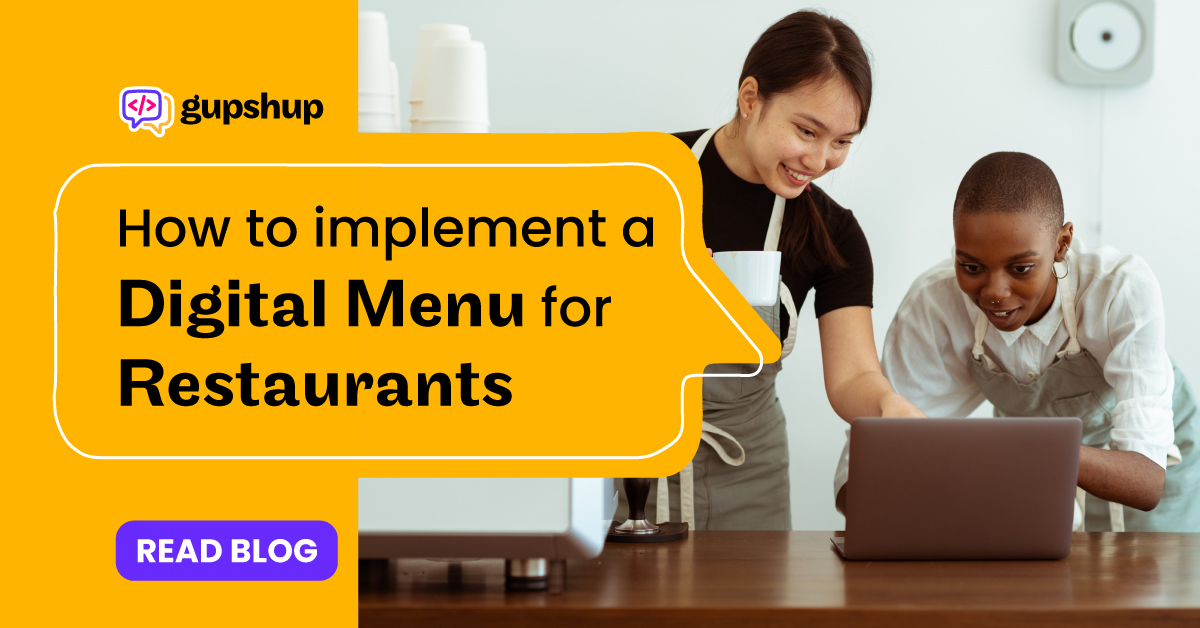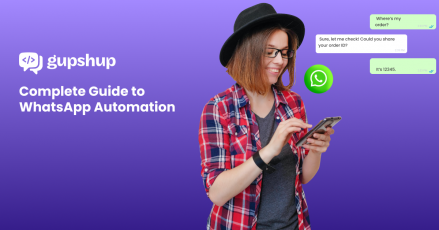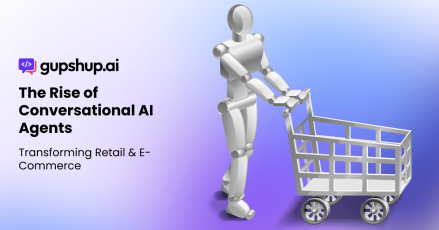How to implement a Digital Menu for Restaurants
On March 23, 2021 | 3 Minutes Read
Conversational AIConversational CommerceConversational MarketingConversational SupportFood & Beverage

COVID-19 has accelerated the movement of restaurants going online. There are many aspects of taking a restaurant online – ordering, payment, delivery and marketing. One of the key aspects of an online restaurant experience is a digital food menu. A digital food menu is not just a digital copy of a physical menu that a customer can access. It is an interactive interface that makes it easy for a customer to scan, identify and choose dishes that they like and order and pay seamlessly, either in-person or online.
Here are five things to keep in mind while implementing a digital menu for restaurants
- Digital Restaurant Menus are not scanned copies of physical menus
Many restaurants have added QR codes that open up a scanned copy of their physical restaurant menu. These are usually not optimized for different screens and are clunky to navigate. Besides they do not integrate the steps that usually follow the scanning of a physical menu – ordering, payment and delivery. - Digital Restaurant Menus need to be interactive and intelligent
A customer might have food preferences (veg vs. non-veg for instance or healthy food preference) or might have favourite dishes on your menu which he/she should be able to select easily. A key advantage of having a digital food menu is to customize the browsing experience for the customer based on their preferences and prior data that you would have collected on their favourite orders. Furthermore, moving a digital menu into a chatbot format is the easiest as the bot will take care of understanding customer preferences and recommending dishes to order - Digital Restaurant Menus need to be accessible remotely and on-premise
Restaurants need to have QR codes so that customers can scan for a digital menu when they are at the restaurant. This is a key dimension of contactless ordering. Customers should also be able to scan the digital menu when they are away from the restaurant, so that they can order for home delivery.Interesting read: Automate F&B Processes with Conversation AI - Digital Restaurant Menus need to work beyond the app
In order to make digital food menus accessible for scan ordering at restaurants or ordering for home delivery, restaurants need to think beyond mobile apps. Restaurants need to look at newer solutions like progressive web apps (PWA) that help in the creation of an interactive digital restaurant menu that can work on any device. When they are at the restaurant they can scan order food and when they are at home, they can use a link that opens up a digital menu that they can interact with. Click here to see the example of a PWA - Just implementing a Digital Restaurant Menu is not enough
Lastly, just implementing a digital menu is not enough. Your digital restaurant menu should be integrated with your POS, for scan orders and with online payment options like wallets and payment gateways for remote ordering and last but not the least, with a delivery service that will ensure that your customer gets the full order to delivery experience from you alone, without any intermediary.
To see how Gupshup can help build your digital restaurant menu, click here.




